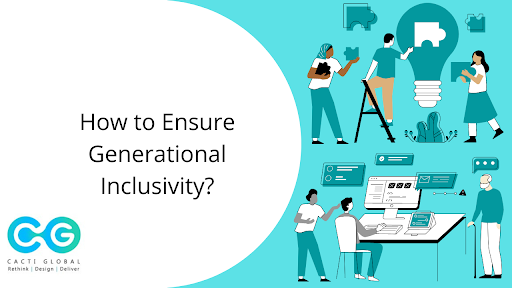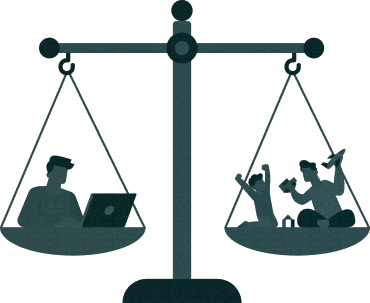When we talk about diversity and inclusion we often miss to include generational diversity. In a time where around 5 generations are present in the workforce, it becomes necessary that their different working styles, preferences, and attitudes towards work are accommodated, to create a healthy work culture. Every generation should have equal opportunities, should feel heard & valued, and comfortable working in generationally diverse teams.
Each generation has grown up in distinct economic and political conditions, which has eventually shaped how they view work. The flip side of this is that employees belonging to different generations bring in radically different perspectives, which can open up ground for knowledge sharing and innovations. Members of different generations can co-exist and have a symbiotic relationship benefiting the organization at large. For example, Baby Boomers and Gen X can mentor Millenials and Gen Z, whereas the latter group can help the former become more technologically adept.
Organizations are well aware of having a generationally diverse workforce, and it is in their favor to employ as well as retain people from different generations. But the biggest challenge is to achieve this without ageism while keeping a harmonious work environment.
Here are some practices that organizations can implement to keep stereotyping, prejudice, and discrimination based on age at bay:-
- Surveying Employees to understand what they look for in the workplace, their pain points, and suggestions to improve the same. Once the responses are collected crafting a work environment that caters to the different needs of different people
- Sensitizing employees to discard Stereotypes: Many times people tend to unintentionally make age-related comments, for example, older generations being stubborn about 9-5 or younger generation preferring texting over phone calls, etc, such subtle comments can be harmful to the work environment. Hence educating and sensitizing employees on ageism can go a long way. Having candid conversations with teams about the similarities and differences in generations can also help to bridge the communication gap among employees.
- Avoiding one size fits all: Different generations might have distinct working styles, personal responsibilities, and priorities. Providing generation-sensitive benefits like student debt assistance, flexible working hours, healthcare benefits, daycare support, phased retirement programs, etc helps to cater to the needs of all the employees while making them feel valued.
- Staying away from making assumptions: Many times companies believe that younger generations can devote more time as they do not have family responsibilities, or that older generations are uncomfortable with change and hence are not included in new projects. Not only do such assumptions encourage stereotyping but also take away opportunities from people and treat different age groups unfairly. The best way to combat the urge to make assumptions is to communicate clearly and take action according to the responses received.
- Making Company Culture Apparent: Letting employees know what is accepted and what is not. Talking openly about diversity, inclusion, discrimination, mental health, etc. The expected behavior should be outlined. There is always a possibility that not everyone will agree with the company’s take on all the issues, it is essential that they understand the intention behind the company’s beliefs as well as how it indirectly benefits them, giving them enough motivation to maintain a happy and healthy work culture.











